How to do the climber exercise correctly. Climber exercise. Climber with bent arms
Different parts of the body receive load. We will consider below which muscles are stressed in the climbing exercise, how to do it correctly and how to complicate the training.
Benefit
In the climbing exercise, different muscle groups receive intense load. It is rightfully considered universal and truly effective. Are the benefits of rock climbing limited to abdominal training? The exercise is useful because it engages different muscles, strengthening and toning them. With its help you can achieve the following results:
- General strengthening of the deep muscles of the trunk, which ensures stabilization of the spine.
- Tighten and tone your arms, legs, and abs.
- Maintain a healthy spine and royal posture.
- Strengthen the muscles of the lower body, work on the elasticity of ligaments and tendons.
- Ensure natural compaction of bone tissue.
- The exercise can be used as an effective warm-up.
- The climbing exercise helps burn calories at an intense pace, which is effective for developing sculpted abs and overall weight loss.
- Increase endurance during physical activity and overall vitality.
What muscle groups does it affect?
You can evaluate the effectiveness of the climbing exercise for the abs by the immediate appearance of results in the case of regular training. However, in addition to the abdominal muscles, the “climber” or “mountaineer” also uses other parts of the body that receive an excellent load.
Let's look at the table for which muscle groups are subject to load during the climbing exercise.
| Part of the body | Which muscles get the load? | What are they responsible for? |
| Core muscles | Deep muscles that lie next to the spine | Responsible for fixing the spine, allowing you to maintain a healthy spine and correct posture |
| Muscles of the body |
| Responsible for body position and orientation |
| Leg muscles |
| Provides tightness and overall muscle tone |
| Muscles of the upper body |
| General body tone |
| Muscles of the shoulder girdle |
| Fit and tone |
Variations of the exercise and their technique
The classic technique of performing the “climbing” exercise cannot be called complex. To get the desired result in the form of a strong core and general tone during training, you must follow three simple rules:
- Breathing rule. Free and even breathing is your ally in the “climber” exercise.
- The rule for gradually increasing the pace of the exercise. Don’t chase speed, but develop your technique by gradually speeding up the movement with your legs.
- Rule of body position. The correct body position is tense and level, as in the starting position.
Basic exercise
Let's take a closer look at how to do the climbing exercise correctly. You can master the technique by carefully listening to the sensations, first slowly and consistently performing all the actions. You can gradually increase the pace of your workout and use more complex variations.
So, the “climber” technique:
- We take the starting position in a lying position. Arms are straightened, legs are shoulder-width apart. We rest our palms and toes on the floor. We keep the body straight, do not bend the lower back and do not push the buttocks up, and evenly distribute the body weight on the supports.
- We exhale while simultaneously tensing the abdominal muscles. At the same time, we pull the knee of one leg towards the chest (without moving the knee to the right or left). The lower back remains flat, without bending.
- We return the leg back as we exhale. The abdominal muscles remain tense. We repeat the exercise with the other leg.
- We perform the required number of repetitions in the approach. After which we rest.
The target muscles for a “climber” are the abdominal muscles. The exercise also involves the chest and buttocks.
With twisting
You can complicate the classic “climber” by slightly modifying the technique. Let's look at how to do the climbing exercise with twisting:
- To do this, we take the same starting position as for traditional push-ups (hands shoulder-width apart, legs together, keep your back straight).
- We inhale, and as we exhale, bend the right knee and, by twisting at the waist, direct it to the left side towards the shoulder. As you exhale, we return to the starting position, then repeat the exercise on the other leg.

There are 2 options for this twisting climber:
- We perform all repetitions with one leg first, then the second one;
- alternate legs, performing the same number of repetitions on each side.
The target muscles for this exercise are the internal and external obliques, as well as the rectus abdominis. On the side of the legs, this is the quadriceps femoris muscle. Accessory muscles are the pectineus and biceps femoris.
“Climber” with hands on a bench or on a ball
To perform a complicated “climber” you will need additional equipment: a bench, a ball (a medicine ball, a gymnastic ball or a Bosu hemisphere). Technique:
- We take the position while lying down, placing our arms on a support (ball, bench) so that they are directly under the shoulders and are fully straightened.
- We tense the muscles of the torso, especially the abs.
- Raise your knee to your chest (as you exhale), while trying to keep your torso as straight as possible.
- While inhaling, we return to the lying position and repeat the exercise with the other leg.
The exercise will be most effective if you keep your body straight while doing it using tense abdominal muscles. When raising your knees, you need to pay attention to your lower back. It should not be rounded or bent. While climbing, you should not bend your elbows.

"Climber" bipedal
Exercises for rock climbers at home can be complicated. After mastering the traditional technique of the exercise, you can move on to the advanced version of the two-legged climber. The main difference is that two legs are involved in the main movement. How does this training work?
- We take the starting position (lying position). Hands shoulder-width apart, feet together.
- We check the position of the body. It should be like a straight line. We do not round the lower back.
- As you exhale, pull the knees of both legs to your chest in a buckle. As we exhale, we come back.
In addition to the abs, the target muscles in this version of the climber are also the arms and back. Auxiliary muscles are the core and delta muscles.
Common mistakes
The desire to do an approach as quickly as possible and a lack of understanding of which muscles work during the “climbing” exercise are the main mistakes of novice athletes. There is no need to rush into the process of mastering the technique. It is better to qualitatively and gradually hone the correctness of the movement, gradually increasing the number of repetitions and speed of movements.
What other errors are there? Let us consider in the table the main technical violations and ways to eliminate them:
| Common Mistakes | How to fix it? |
| In the starting position, the body weight is shifted to the arms or legs. | Distribute your body weight in the starting position between your arms and legs evenly. |
| Shift of the body to one side during leg movements. | Keep your body straight while performing the exercise. The abdomen is tucked up and is in constant tension. |
| Rounded lower back. | Keep your back straight, watch your lower back. It should not sag while climbing. |
| Bent elbows, body weight shifts to the arms, the elbow joint works in overload mode. | The ideal option is straight arms; if this is difficult (weak arm muscles), slightly bent elbows are allowed. |
| Shortness of breath and shallow breathing. | Maintain calm and even breathing throughout the exercise. |
As your endurance increases, gradually progress to performing rock climbers at a fast pace and with as many repetitions as possible. At the same time, fully observing the exercise technique.

29.08.2019 16:37:00
The ab climb exercise is an extremely effective cardio exercise that helps strengthen the cardiovascular system and increases the overall endurance of the body. With its help, if performed correctly, an athlete can get strong and aesthetically pleasing abs in a relatively short time.
The basis of the exercise is the “plank” position, which engages the deep muscles and forces them to work with maximum efficiency. No additional equipment or sports equipment is required for classes.
Many athletes choose this exercise as a warm-up, as it allows them to quickly warm up their muscles and prepare for subsequent workouts.

What does the “climbing” exercise do?
The “climber steps” exercise loads different muscle groups, so it can be considered not only effective, but also truly universal. If you follow the technique, training not only strengthens your abs, but also engages other muscles and helps keep them toned. The exercise allows you to:
- strengthen the deep muscles of the trunk, which provide stabilization of the spine;
- tighten your abs, legs and arms;
- maintain spinal health;
- get good posture;
- increase the elasticity of ligaments;
- compact bone tissue;
- intensively burn calories for weight loss;
- form a sculpted, beautiful press.
The benefit of the “climber” exercise also lies in the fact that with its help you can increase the vitality and endurance of the body, necessary for strong physical exertion.
What muscles work in the rock climber exercise?

With regular training, the exercise allows you to achieve very quick results; the technique uses both the abdominal muscles and other parts of the body.
What muscles work:
- Core muscles. Deep muscles responsible for fixing the spine.
- Muscles of the body. Rectus and oblique abdominal muscles, hip flexors and extensors, responsible for body orientation.
- Leg muscles. The calf muscles, shin and foot flexors, and quadriceps femoris muscles provide overall fit to the body.
- Upper body. The pectoralis minor, serratus anterior, abductor and adductor scapulae, affecting the overall tone of the human body.
- Shoulder girdle. Deltoid, pectoralis major, triceps, shoulder flexors, forearm extensors - provide overall tone and fit of the body.
How to do the climber exercise correctly?
Positive results from exercise can be achieved by correctly performing the “climber” abdominal exercise. The easiest way is to use the classic technique, which even a beginner can cope with without outside help or explanation. But you need to follow a number of important rules:
- Watch your breathing. Breathing should be uniform and free.
- Increase the load gradually. You cannot sharply increase the load on an unprepared body, this can lead to injury. Pay more attention to the rules of execution rather than the number of repetitions.
- Control your body position when training. While performing the exercise, it is necessary to maintain the body in a tense position without arching the back.
Lie on the floor, straighten your arms and place your feet shoulder-width apart. Place your toes and palms on the floor. Keep your back straight and do not stick your buttocks forward. Your weight should be evenly distributed throughout your body.
Take a deep breath, tighten your abdominal muscles and pull your right knee towards your chest. It should not deviate to the side. You need to be especially careful to maintain your body in a straight position: if your back arches, your abdominal muscles will not be activated as needed.
Then the knee slowly returns to its original position and exhales, but without relaxing the abs. The same is done with the left foot. The steps are performed in sequence and evenly. The number of repetitions is determined individually, depending on the athlete’s preparedness.
Alternative techniques for performing the rock climber exercise

To get strong and beautiful abs as quickly as possible, as well as to diversify your workouts, you can use other “climber” techniques. The following exercises are very popular:
- With twisting. It differs from the classic version in that when the knee of one leg is bent, it is directed to the side - towards the shoulder, and then returns to its original position after exhaling. This embodiment allows you to focus on the oblique and internal abdominal muscles.
- Hands on a bench (you can use a medicine ball or exercise ball instead of a bench). When performing, you need to rest your hands on the bench (arms should be straight and palms directly under your shoulders). After taking the position, take a deep breath and pull your knee to your chest. During the execution, monitor the position of your torso; it should be straight at all times.
- Bipedal. A more complex version of the “climber”, which you can move on to after mastering the classic and other described techniques. The exercise involves using both legs at the same time. After taking the starting position, you need to bring your legs together and place your hands shoulder-width apart. After exhaling, pull both legs towards your chest as you jump, and then return them to the starting position. This version of the technique allows you to pump the muscles of the legs, arms, deltas, back and core simultaneously with the press.
When performing any technique, remember the quality of execution. Many people strive to get results faster, so they neglect the prescribed rules, but this is absolutely forbidden, since violations are fraught with a variety of injuries.
The “Mountain climbers” exercise (in the English version “Mountain climbers”) is of an average level of difficulty, used by professionals to warm up before exercise and by amateurs as part of strength training. It involves several large muscle groups at once, therefore it is more effective than crunches, glute bridges and other isolating exercises. Increases heart rate, increases, strengthens the muscles of the abs, legs, buttocks, shoulder girdle and helps reduce the percentage of fatty tissue in the body.
Exercise "Mountaineer" - a complicated version of "". Before you begin, make sure that there are no mistakes in the approach exercise: your hands are under your shoulders, your shoulder blades are down, your lumbar region is slightly rounded.
Muscles involved: arms/abs/buttocks/thighs.
Difficulty: medium.
Lead-in exercise: “Plank”.
Execution technique
The main nuances of performing the exercise and possible errors:
The abs are tense when moving the legs and fixing the final position.
The body weight is evenly distributed between the right and left sides of the body; there is no displacement when the leg is lifted off.
The buttocks are fixed in one position.
There is no tension in the lower back, the load on the lumbar spine is removed, and the appearance of a deflection in the lower back is fraught with injury.
Hands are placed clearly under the shoulders and slightly bent at the elbows to minimize the risk of injury to the joint.
The shoulder blades are lowered, the latissimus dorsi muscles are tense.
Breathing is even, as you exhale, the knee moves towards the chest, and as you inhale, it returns to its original position.
Execution options
The exercise can be simplified or complicated depending on the athlete's training and goals. The scheme is the same for all varieties; the time of fixation in the final position at the chest and the emphasis of the load change. The following types of exercise are distinguished depending on the dynamics of execution:
- step. Slowly pull the knee to the chest, linger at the top point and return to the starting position.
- jump. We change legs, jumping forward, fix the position and return to the starting position.
- on the run. Fixation at the end point is minimal.
Depending on the shift in load emphasis:

“Climber” is always performed from the “Plank” position from the palms. This variation is more challenging for most people than the forearm plank.
“Climber” in running is the most difficult version of the exercise. To measure progress, regularly record the time you continuously perform the exercise in one set. Start mastering the exercise with 3 approaches of 30 seconds, gradually increase the time to 1 minute in 6 approaches.
Perform the exercise at the beginning of a strength training session or in between compound exercises as an interval training routine.
Reading time: 14 minutes
Mountain Climbers are an intense cardio exercise that gets your heart rate up, burns calories, and gets your entire body working. During the mountain climber, you will strengthen the muscles of your shoulders, arms, chest, legs, and especially your abdominal muscles. This is an excellent exercise for toning the body and losing excess weight. This article will discuss the benefits and effectiveness of the “climber” exercise, how to perform it correctly and what to pay attention to from a technical point of view.
Climber: technique and performance features
The "mountain climber" can be said to be a more advanced version of the popular plank exercise. It is also called "horizontal run", because during its execution you simulate running in a horizontal plane.The mountain climber uses the muscles of your upper and lower body, but it is also useful if you want to target your abdominal muscles. In addition, horizontal running helps raise your heart rate, train your heart and burn calories. This is truly a great full body exercise!
Climber technique
1. Stand in a hand plank position with your palms directly under your shoulders. Tighten your stomach, tighten your buttocks and abdominal muscles, twist your pelvis. The body forms a straight line from head to heels. To begin with, you can hone the correct body position in the mirror.
2. Pull your right knee towards your chest, while tightening your abdominal muscles even more (this will help keep your body in the correct position).
3. Lightly hop your left knee toward your chest, simulating running in a plank position. Quickly change legs, pulling either the right or left knee to the chest.
What to pay attention to:
- Relax your neck and don’t lift your head, look at the floor,
- Lower your shoulders, they should not reach towards your ears
- The back does not slouch, the lower back does not arch or sag
- Keep your body in a straight line, do not lift your buttocks up while running.
- Your palms are directly under your shoulders, do not move your body back
- The stomach is tense and tucked, you should feel the abdominal muscles
- Try to move softly, slightly springing your legs, without creating a shock load
- Do the exercise in sneakers
- Don't hold your breath, try to breathe synchronously with the movement

Regardless of the speed of the exercise, you must control the correct position of the body. This is key to performing the exercise effectively.
Perform the Mountaineer exercise at a comfortable pace for 20-30 seconds, repeat in 2-3 approaches. You can speed up or slow down by adjusting the load throughout the exercise. Gradually increase the number of repetitions or quality of sets.
Contraindications for performing the “Mountaineer” exercise:
- Pregnancy and postpartum period
- Knee problems
- Musculoskeletal problems
- Cardiovascular problems
- Phlebeurysm
- Large excess weight
- Leg or shoulder injuries
- Postoperative period
"Mountaineer" option for beginners (low impact)
The “Climber” exercise is quite complex and is suitable only for experienced practitioners who can easily handle hand planks, running and jumping. If you are a beginner or have contraindications, then you can perform a lightweight (low-impact) version of the exercise.
The lightweight "Mountaineer" is performed as follows. Stand in a plank position on your hands and consistently pull one or the other leg towards your stomach. You can rest your toes on the floor, this will help reduce the load even more. Do the exercise at a slow pace. As your muscles strengthen and your endurance increases, increase your speed and move on to advanced modifications.

Many thanks to the fitness account on Instagram for the gifs: @nataschafit.
Why do you need the Climber exercise?
The mountain climber can be incorporated into your cardio workouts, interval training, and ab workouts. Unlike regular jumping and running, where your body is in a natural upright position, the climber is performed in an unstable plank position. This puts extra stress on your muscles and helps you burn even more calories. If you alternate, for example, vertical running in place and horizontal running in a plank, then you will get a much stronger load than when training the body “in one plane.”
When performing the Climber, the following muscles are involved:
- Rectus abdominis muscle
- Gluteus maximus muscle
- Quadriceps
- Biceps femoris (back of the thigh)
- Deltoids (shoulder muscles)
Additionally participating:
- Triceps
- Chest muscles
- Obliques
- Adductor muscles (inner thigh)
- Calf muscles
When can you perform the Mountain Climber exercise:
- Instead of running or other aerobic exercise
- In abdominal workouts, in addition to or instead of planks
- In circuit training, which alternates cardio and strength exercises
- In interval Tabata training, and others
- After strength training for additional fat burning
10 Benefits of Doing the Climber Exercise
1. Mountain climber is a great cardio exercise that will raise your heart rate, speed up your metabolism and help burn calories.
2. With the help of a climber, you will strengthen the muscles of your arms, abdomen and legs, tone your body and get rid of problem areas.
3. Like any cardio exercise, horizontal running trains the heart muscle and develops endurance.
4. During the climber's execution (as well as any other exercises in the plank position) you will pump up your muscle corset, which will help protect your back from injury and stabilize your spine.
5. To perform the climber, you will not need additional equipment or special equipment. You can do it anywhere you have some free space.
6. This exercise develops coordination, agility and balance.
7. Compared to other plyometric exercises, the mountain climber puts a gentle load on the knee joints.
8. Unlike regular jumping and running, the climber is performed in an unstable plank position, which allows you to engage more muscles and burn more calories.
9. This exercise is suitable for both beginners and advanced. Just do it at a pace that is comfortable for you, gradually increasing the load.
10. The mountain climber has many variations, so you can always diversify your workout with different modifications of this exercise.
Options for performing the Climber exercise on video:
Climber: 10 different modifications
Mountain climber is one of those types of exercises that have many modifications. This means you can always modify or make it more difficult for a more effective workout. In addition, you can create an intense abs and fat burning workout by alternating several modifications of the climber with each other.
For example, choose 4-5 modifications of the exercise from those suggested below and perform them according to the following scheme: 30 seconds exercise, 10 seconds rest, repeat in 2-3 circles. The time and number of laps can be adjusted independently.
Many thanks to the fitness accounts on Instagram for the gifs: @nataschafit and youtube channels: StreamFITtv.


3. Plyometric Mountain Climber

4. Climber with up and down walking

5. Climber with hands on a bench (for beginners)

6. Climber with feet on a bench (for advanced)

And, despite its multi-joint nature, it is not considered basic. In particular, it is mainly used as:
- warming;
- training the abdominal muscles;
- as aerobic or cardio.
Note: if additional weights are used, it may well be considered as basic.
But with the correct technique, it can amaze even an experienced athlete with its load. What is the secret of the climbing exercise, and who is it intended for?
Interesting fact: the exercise was successfully used by athletes and dancers during the Soviet school of sports. In particular, it was used as a simplified form, and the main task was not to prepare the abdominal muscles and leg flexors, but quite the opposite. The exercise, performed at a high tempo, was supposed to increase the strength endurance of future athletes, and most importantly, strengthen the arms and upper shoulder girdle for static load. It was then used in conjunction with exercise balls to improve coordination and prepare the obliques. And only with the advent of CrossFit as a sports revolution, the “climber” acquired its modern form.
What muscles work?
The climbing exercise works many muscle groups. Its main advantage is its versatility, as it is suitable for both men and women. It will be an ideal start for obese people, because it combines multi-joint and aerobic characteristics. For the complete anatomy of the exercise, see the table below.
| Muscle group | Movement phase | Role (accent) |
| Triceps | All the time | |
| Front Deltas | All the time | Static load, with slight dynamic change due to movement characteristics |
| Pectoral muscles | All the time | In the classic version, the load is exclusively static. In the mode with body rotation – static-dynamic load |
| Neck muscles | All the time | |
| Bottom of trapezoid | All the time | Static load, with slight dynamic change due to movement characteristics |
| Rhomboid muscle | All the time | Static load, with slight dynamic change due to movement characteristics |
| Psoas | All the time | |
| Core muscles | All the time | Dynamic load, with a change in emphasis during any movement |
| Lateral abdominal muscles | Active phase | Dynamic accentuation when turning the body to the sides |
| Obliques | Active phase | Dynamic accentuation. Target muscle in exercise |
| Biceps hamstrings | In active phase | Helps pull your legs closer to your body. The load is small, but accentuated |
| Gluteal muscles | Negative phase | Responsible for straightening the legs and returning to the starting position. The load directly depends on the type of exercise and the speed at which it is performed. |
| Calf muscles | All the time | Static load, with slight dynamic change due to movement characteristics |
| Carp groups | All the time | Static load, with slight dynamic change due to movement characteristics |
| Abdominal muscles | In active phase | Receive the main load while pulling the legs closer to the body |
| Quadriceps | In a negative phase | Extension of the leg with acceleration creates a small load, trains the ligaments, and allows you to perfectly stretch the quadriceps before squatting approaches |
| Heart muscle | During active phases of movement | Significant load, which is determined by the multi-joint nature of the exercise and its pace |
As you can see from the table, this exercise uses almost all the muscles on the human body. By using special rubber bands, you can significantly increase the emphasis on the abdominal muscles or leg muscles. Unfortunately, due to the inability to evenly distribute the increased load across the entire body, the climber ended up on the list of aerobic exercises.
However, to bring the body into general tone before training, this is the ideal solution.
Note: To increase the load on the upper shoulder girdle, you can use a load vest. Complete differentiation and strengthening of the load is achieved exclusively through the simultaneous use of tourniquets and a vest.
Execution technique
Let's look step by step at how to do the exercise correctly. The technique seems extremely simple. However, if at least one of the points is not observed, the benefits of the climbing exercise are significantly reduced.
Let's consider techniques for beginners and more advanced athletes.

For beginners:
- Take a classic lying position (arms are at shoulder level, palms parallel to each other).
- Level the body (no bends or arches).
- Slowly lift one leg.
- Then lower it to its original position
For beginners, it is important to follow the correct breathing technique when performing the exercise, and maintain a confident but stable rhythm. During the active phase of the exercise, exhale. While in the negative phase, inhale. Work in this mode until the deltas completely fail. Those. approximately 60-120 seconds.
For professionals:
Professionals often use more complex variations on the rock climber theme. Be it a variation with a body rotation, or a two-legged version. But you can complicate the simple technique of performing the climbing exercise.
- Align the body.
- Then lower it to its original position.
- Repeat the operation with the second leg.
In this case, due to the shift in the center of gravity, almost the entire load is taken by the abdominal muscles, and the deltoids themselves work somewhat more actively, since they are in the highest phase of tension due to the non-standard position.
A more complete technique for the climbing exercise can be seen in the video.
Execution Variations
There are several main types of exercise. Each of which is a more complex version of a simple "climber".
- Bipedal climber - allows you to shift the load on your legs and use your heart muscles more strongly.
- Climber with body rotation - maximum load on the abdominal muscles and core.
- The Bent Climber is an extreme option for those who want powerful front deltoids.
- Climber with a load - helps to strengthen all muscle groups, in addition, develops explosive speed, useful when running.
Let's consider the technique of each of them as they become more complex.
Bipedal climber
The two-legged climber is designed to take stress off the obliques. Instead, the leg muscles are additionally trained for explosive strength.
How to do it correctly? Everything is very simple (but this does not mean that the exercise is simple):

- Take a lying position - hands are above head level, parallel to each other with a wide grip).
- Maintain a slight deflection in the body (no more than 10 degrees).
- At a fast pace (jumping style), pull both legs towards the body, and then return them to their previous position at the same pace.
In fact, in this case, the athlete imitates the movement of a frog, and a high pace and full use of the leg muscles increases the heart rate compared to a simple climber by approximately 25-30%.
Note: When working with this style of exercise, it is recommended to use a heart rate monitor in order not to exceed the maximum allowable heart rate. Since if it is exceeded, the benefit from the exercise is offset by the increased load on the heart, which, when working at a certain heart rate, receives microtraumas leading to the “sports heart” syndrome.
Climber with body rotation
This is another variation of the exercise that significantly reduces the load on the leg muscles, while maximizing the use of the core and abdominal muscles, especially the oblique and lateral abdominal muscles.
How to do it correctly?

- Take a lying “grasshopper” position - your hands are located significantly below shoulder level with your palms placed narrowly.
- Align the body.
- At a fast pace, pull one leg up, touching your knee to the body.
- At the moment of pulling your leg, turn your body in the direction of the turn.
- Stay in this position for about 5-10 seconds.
- Rotate the body to the starting position with the return of the leg.
In this case, it is considered that the climbing exercise is performed for the abs . Therefore, it can be used in combination with burpees, or with other sets of exercises that involve the oblique and lateral abdominal muscles.
To complicate the exercise, additional professionals, when turning the body, extend their arm upward, leaving their weight on the 1st leg and 1st arm. In this case, additional emphasis is formed in the athlete's deltas.
Climber with bent arms
This variation is almost identical to the classic exercise with the exception of one small nuance. To maximize the load on the deltoids and triceps, the arms in the starting position do not rest on the joints, but are slightly bent (as in the first phase of push-ups) and remain in this position until the end of the approach. This increases the load on the entire shoulder girdle and makes the exercise technically difficult.
Training programs
Mountain climber is a universal exercise that is suitable not only for beginners, but also for professionals. Wide differentiation in technique turns it into a full-fledged basic complex that uses almost all muscles in the body. At the same time, in the absence of additional weighting, it is almost impossible for them to be injured.
Important: remember that under one name there is a whole complex hidden. Therefore, when drawing up your own program, carefully look at the “type” column so as not to get an unnecessary load in the complex.
Climbing is one of the basic exercises within the CrossFit system. Because it corresponds to all its principles:
- working out the main muscle groups;
- ability to work at a high pace to progress the load;
- possibility of complication;
- low risk of injury.
Various assumptions can be made about the benefits of climbing exercise. In particular, by itself, it is ineffective and requires preliminary fatigue of muscle groups with other basic exercises. It is especially effective to perform the exercise after the “Roman chair” with a dumbbell behind your head. In this case, the core muscles and rectus abdominis almost completely fall out of the exercise, and the load falls directly on the oblique muscles.
If for some reason a person does not have the opportunity to visit a fitness center to do CrossFit, it is recommended to buy a load-bearing vest and tourniquets.
In this case, with the help of a climber you can really work out the whole body, and the load will be comparable to a full-fledged bodybuilder in the gym. The harnesses will provide additional training to the abdominal and leg muscles, while the load vest will evenly distribute the weight, increasing the load on the shoulder girdle.
A climber with harnesses will not only greatly pump up your legs, but will also give a very unusual effect - in particular, a significant increase in running speed.

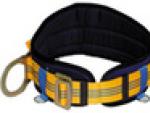
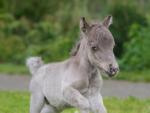




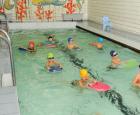 Children's and family inflatable pools Intex How to overcome the fear of water
Children's and family inflatable pools Intex How to overcome the fear of water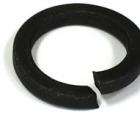 Spring lock washer Offer description and product characteristics
Spring lock washer Offer description and product characteristics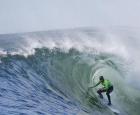 Five new sports will be added to the Tokyo Olympics
Five new sports will be added to the Tokyo Olympics Pole classes - an effective sports load Elements of floor dance for beginners
Pole classes - an effective sports load Elements of floor dance for beginners